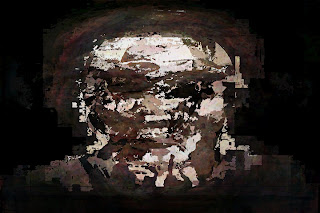
Another stack filtering experiment. Generated from a stack series of facial images processed with a Studio Artist temporal image operation.
A depository for John Dalton's personal artwork. Studio Artist, MSG, procedural art, WMF, digital painting, image processing, human vision, digital art, slit scan, photo mosaic, artistic software, video effects, computer painting, fractals, generative drawing, paint animation, halftoning, video effects, photo manipulation, modular visual synthesis, auto-rotoscoping, directed evolution, computational creativity, artificial intelligence, generative ai, style transfer, latent diffusion












